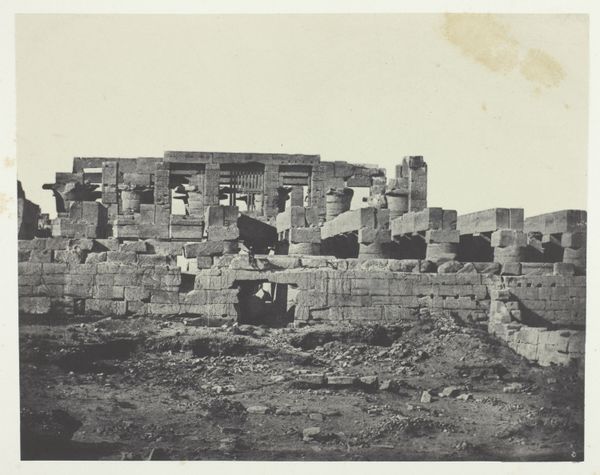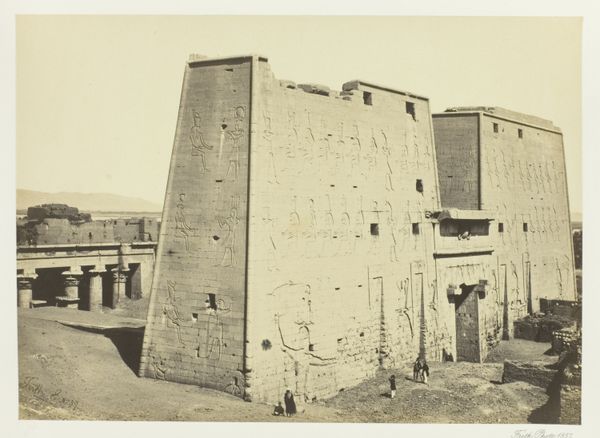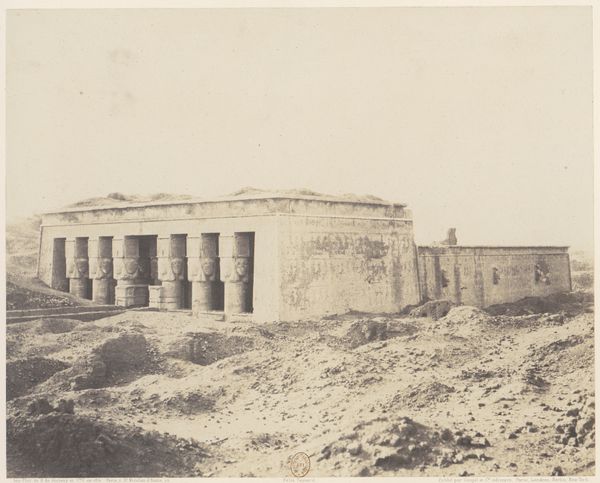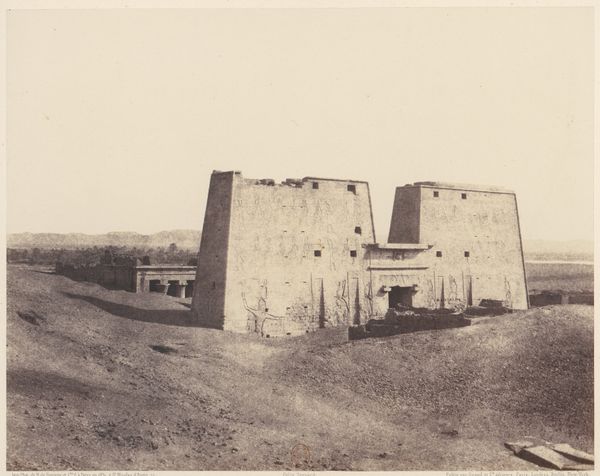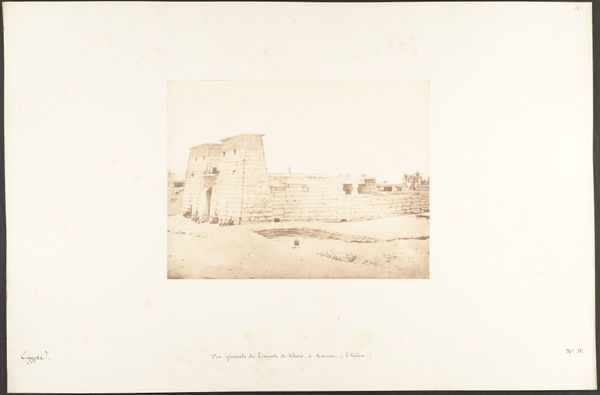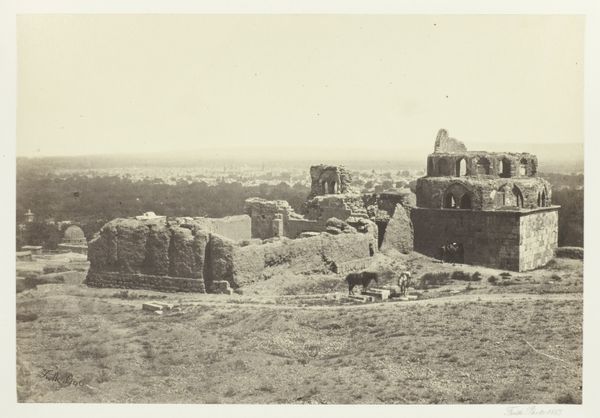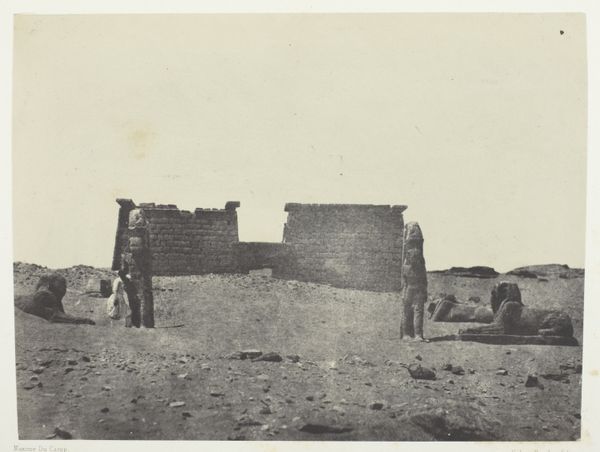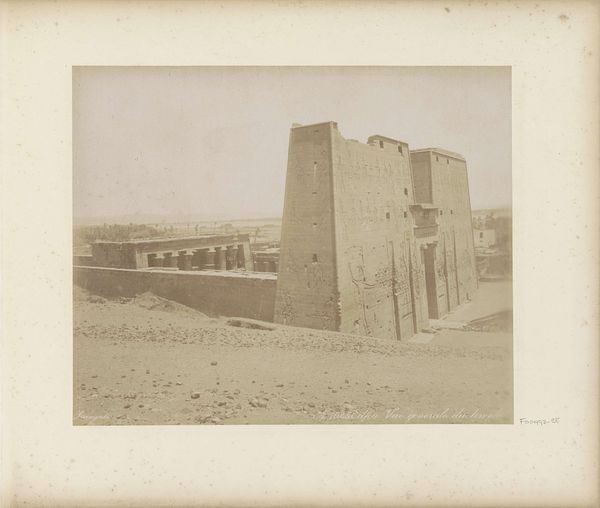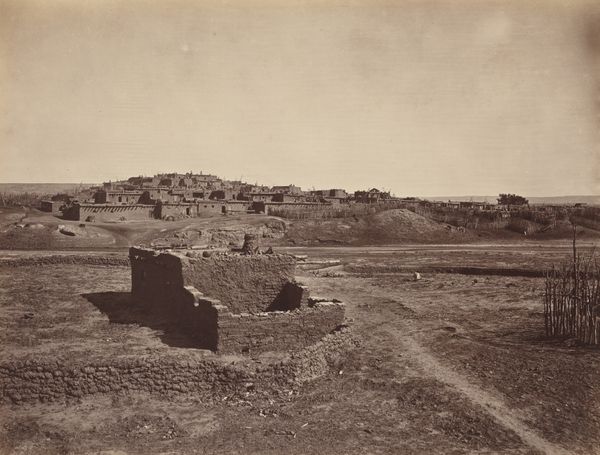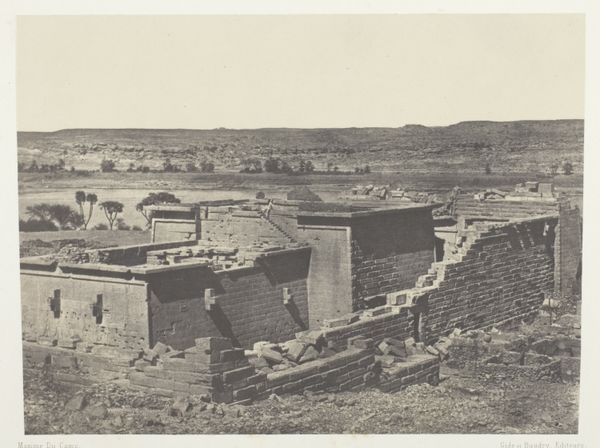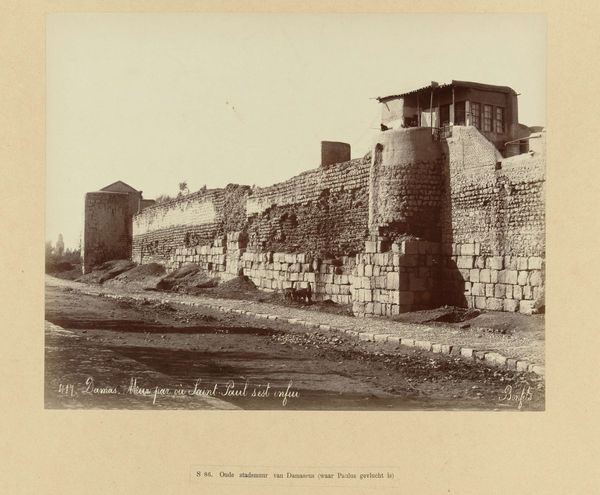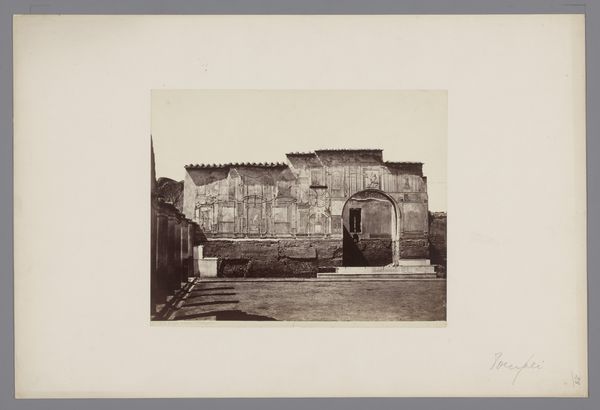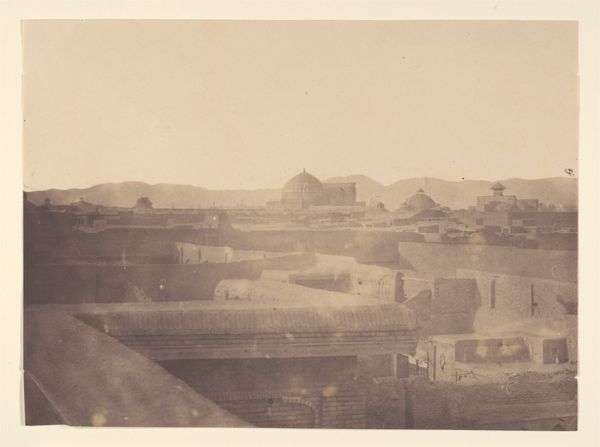
print, photography, site-specific, albumen-print
#
16_19th-century
# print
#
landscape
#
ancient-egyptian-art
#
photography
#
egypt
#
ancient-mediterranean
#
site-specific
#
france
#
history-painting
#
albumen-print
Dimensions: 16.9 × 20.9 cm (image/paper); 29.9 × 42.8 cm (album page)
Copyright: Public Domain
Editor: So, this albumen print by Maxime Du Camp, "Karnak, Temple de Khons; Thèbes," likely taken between 1849 and 1852, possesses a real austere, imposing quality. The sheer scale of the temple is so striking. What are your thoughts on this work? Curator: It's more than just imposing; it's a potent artifact of its time. Consider what it means for a French photographer to document ancient Egyptian architecture. We’re witnessing a moment of cultural exchange steeped in colonialism. Du Camp wasn't merely capturing an image; he was participating in a larger project of European appropriation and representation of the "Orient." What does that say about who gets to tell whose story? Editor: I hadn’t considered that angle. I was just focusing on the pyramids in the picture. Does his perspective shape our understanding of Egyptian culture today? Curator: Absolutely. Photography, especially early photography like this, played a crucial role in shaping Western perceptions of non-Western cultures. Du Camp’s images, circulated widely in Europe, influenced popular imagination, often reinforcing existing stereotypes or creating new ones. Think about the power dynamics at play: a European gaze framing and interpreting an ancient civilization. What's absent in this photo, for instance? Editor: People. Other than the one tiny figure standing at the entrance of the temple! Curator: Exactly. The absence speaks volumes. It's presented as an empty, available space, ripe for the taking. That reinforces the colonial narrative of “unoccupied” land, devoid of contemporary inhabitants with their own living culture. We have to constantly interrogate the politics of representation in historical imagery. Editor: That gives me a lot to think about. I guess I was seeing the beauty of the architecture, but now I also see the historical and cultural baggage it carries. Curator: Precisely. Recognizing that complexity is how we move towards a more nuanced understanding of both art and history.
Comments
No comments
Be the first to comment and join the conversation on the ultimate creative platform.
